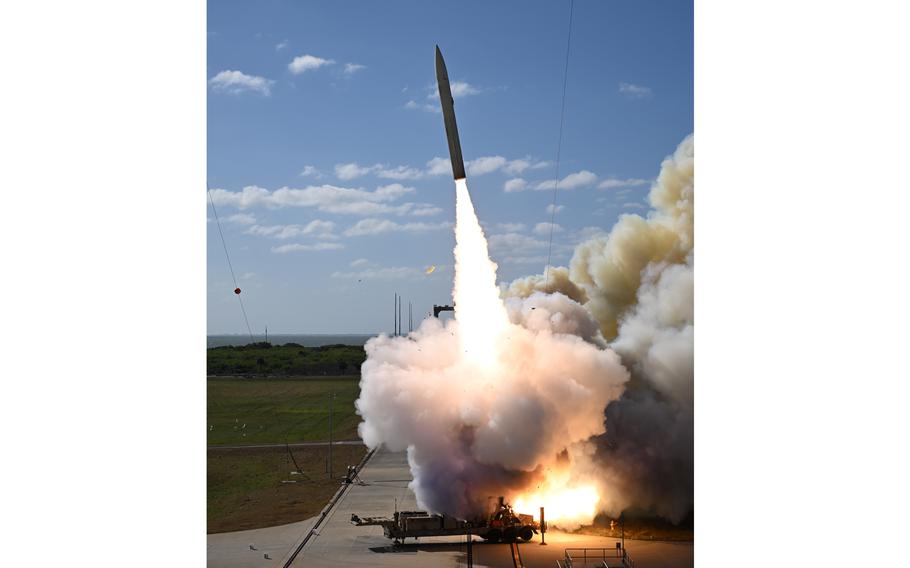
A conventional hypersonic missile is fired as part of a successful test involving the U.S. Army and U.S. Navy, from Cape Canaveral Space Force Station, Fla., Dec. 12, 2024. (U.S. Department of Defense)
The U.S. Army and U.S. Navy completed a successful end-to-end flight test of a conventional hypersonic missile from Cape Canaveral Space Force Station, Fla., on Thursday, Dec. 12, the U.S. Department of Defense said in a press release.
While all eyes are on the highly-anticipated Army-Navy academy football match Saturday, a quiet collaboration between the branches proved fruitful just a couple days earlier.
The collaboration involved the Army’s Rapid Capabilities and Critical Technologies Office (RCCTO) and the Navy’s Strategic Systems Programs (SSP). Navy’s SSP is the lead designer of the All Up Round (AUR) missile that was test-fired.
The Army RCCTO and Navy SSP programs have been working together to field land and sea variants of a hypersonic weapon system, the release said. The partnership should save time and money, and result in a common system that can meet joint battlefield needs.
“As we approach the first delivery of this capability to our Army partners, we will continue to press forward to integrate Conventional Prompt Strike into our Navy surface and subsurface ships to help ensure we remain the world’s preeminent fighting force,” said Navy Secretary Carlos Del Toro, according to the release.
Thursday’s launch was the first live-fire event for the Long-Range Hypersonic Weapon system using a Transporter Erector Launcher and Battery Operations Center (which is for command and control). It was also the second successful end-to-end test of the AUR in 2024, per the release. The first took place in June.
Hypersonic weapons can fly at least at five times the speed of sound and are very maneuverable, making them difficult to counter, although the exact level of the threat posed by such weapons remains under debate.
The Army-Navy test came two weeks after Russia deployed a hypersonic intermediate-range ballistic missile in Ukraine, the Oreshnik. While Russia has used hypersonic weapons against Ukraine before, the use of the Oreshnik was the first of its kind in a war.
U.S. defense officials have expressed concern about the gap between the U.S. and the growing hypersonic arsenals of Russia and China, with one Defense Department official saying in July that hypersonics and counter-hypersonics are among the department’s highest modernization priorities.